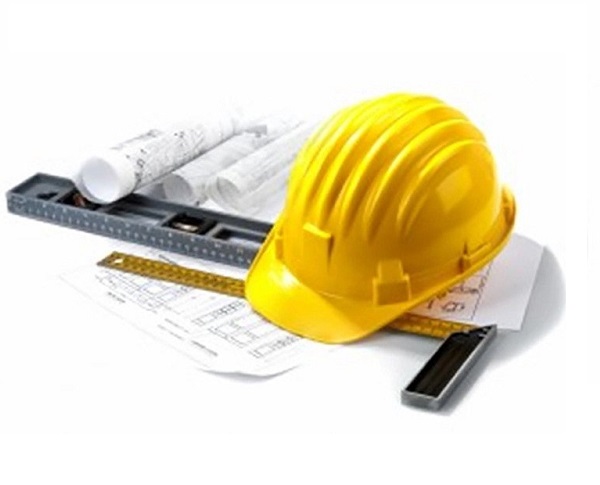CHST Prep Class
Course Modules - (56)
Upon completion of the lesson, participants will be able to:
1. Identify which health and safety programs (e.g., fall protection, ladders, respiratory) are relevant to site-specific safety plan
2. Apply relevant standards to worksite conditions
3. Identify trends related to incidents and accidents
4. Evaluate construction means and methods and their impact on safety
Domain 1 Hazard Identification and Control (includes Health Hazards) • 57.1 % |
Knowledge of: 1. Common hazards and controls associated with hot work (e.g., cutting, welding, grinding) 2. Common electrical hazards and controls 3. Common hazards and controls associated with excavations 4. Common hazards and controls associated with working at heights (e.g., ladders, scaffolding, aerial platforms) 5. Common hazards and controls associated with working in confined spaces 6. Common struck by hazards and associated controls 7. Common caught-in or caught-between hazards and associated controls 8. Common hazards and controls associated with hoisting and rigging 9. Common hazards and controls associated with crane operations 10. Common hazards and controls associated with material handling 11. Common hazards and controls associated with material storage 12. Common hazards and controls associated with housekeeping 13. Common hazards and controls associated with powder actuated tools 14. Common hazards and controls associated with hand and power tools 15. Common hazards and controls associated with asbestos exposure 16. Common hazards and controls associated with lead exposure 17. Common hazards and controls associated with noise exposure 18. Common hazards and controls associated with radiation exposure (ionizing and non-ionizing) 19. Common hazards and controls associated with silica exposure 20. Common hazards and controls associated with chemical exposure 21. Common hazards and controls associated with working in extreme temperatures 22. Common hazards and controls associated with vibration and impact exposures 23. The Globally Harmonized System of Classification and Labeling of Chemicals (GHS) 24. Basic safety through design (e.g., incorporating hierarchy of controls into design of building or systems) 25. Risks associated with multiple trades working simultaneously in work area (e.g., congested area, overlapping of workers) 26. Principles of ergonomics as applied to construction practices and material handling 27. Requirements, usage, and limitations of personal protective equipment 28. Basic testing and monitoring equipment (e.g., electrical, industrial hygiene, four gas meter) required for a situation |
Skill to: 1. Apply the hierarchy of controls 2. Verify corrective actions were effective in eliminating or mitigating hazards 3. Recognize and address hazards over changing construction site conditions (e.g., excavations after weather events, changing site entrances) 4. Develop job/hazard safety analyses 5. Prioritize identified hazards based on level of risk (e.g., order of severity, probability, frequency) |
Domain 2 Emergency Preparedness and Fire Prevention • 10.3% |
Knowledge of: 1. Proper fire protection and prevention methods (e.g., appropriate class of fire extinguishers, inspection criteria) 2. Components of emergency action plans 3. Common elements of response plans for environmental hazards (e.g., releases or spills) 4. Emergency response system (e.g., incident command system, crisis management, emergency response equipment, media) 5. Potential first aid or medical needs (e.g., availability of first aid kit, AED, CPR supplies) 6. Universal precautions (e.g., bloodborne/airborne pathogens) |
Skill to: 1. Plan for emergencies |
Domain 3 Safety Program Development and Implementation • 17.1% |
Knowledge of: 1. Applicable health and safety standards and best practices (e.g., health, safety, construction, and environmental) 2. Common components of site-specific safety plans 3. Worksite assessment or audit processes 4. Roles, responsibilities, and lines of authority as they relate to safety management 5. Recommended equipment inspection records or logs 6. Basic risk management concepts (e.g., public safety, builder’s risk and liabilities, general liability) 7. General/basic construction site conditions that could potentially impact safety 8. Data gathering techniques and procedures used in incident investigations 9. Techniques for determining the root cause of accidents or incidents 10. Post-incident/accident reporting and follow-up procedures 11. Documentation requirements of occupational injuries and illnesses |
Skill to: 1. Identify which health and safety programs (e.g., fall protection, ladders, respiratory) are relevant to site-specific safety plan 2. Apply relevant standards to worksite conditions 3. Identify trends related to incidents and accidents 4. Evaluate construction means and methods and their impact on safety |
Domain 4 Leadership, Communication, and Training • 15.5% |
Knowledge of: 1. Available training delivery methods and instructional materials (e.g., classroom, on-the-job training, online) 2. Appropriate human behavior motivation methods and techniques (e.g., behavior-based safety) 3. Communication strategies (e.g., methods to disseminate information) 4. When to consult with equipment manufacturers, suppliers, or subject matter experts 5. Information confidentiality requirements (e.g., trade secrets, personal medical, personally identifiable information) 6. BCSP Code of Ethics |
Skill to: 1. Develop site-specific safety training requirements based on job tasks and work environment 2. Maintain all applicable documentation (e.g., training documents, injury logs) 3. Determine training requirements and delivery methods based on characteristics and needs of worksite personnel (e.g., skill level, education level, language proficiency) 4. Identify existing and foreseeable at-risk conditions and behaviors 5. Recognize situations or behaviors that present imminent danger 6. Coach personnel to correct unsafe behaviors 7. Access relevant current information (e.g., standards, codes, safety-related information) 8. Apply the BCSP Code of Ethics |
![]()
![]()
Domain 1 Hazard Identification and Control (includes Health Hazards) • 57.1 % |
Knowledge of: 1. Common hazards and controls associated with hot work (e.g., cutting, welding, grinding) 2. Common electrical hazards and controls 3. Common hazards and controls associated with excavations 4. Common hazards and controls associated with working at heights (e.g., ladders, scaffolding, aerial platforms) 5. Common hazards and controls associated with working in confined spaces 6. Common struck by hazards and associated controls 7. Common caught-in or caught-between hazards and associated controls 8. Common hazards and controls associated with hoisting and rigging 9. Common hazards and controls associated with crane operations 10. Common hazards and controls associated with material handling 11. Common hazards and controls associated with material storage 12. Common hazards and controls associated with housekeeping 13. Common hazards and controls associated with powder actuated tools 14. Common hazards and controls associated with hand and power tools 15. Common hazards and controls associated with asbestos exposure 16. Common hazards and controls associated with lead exposure 17. Common hazards and controls associated with noise exposure 18. Common hazards and controls associated with radiation exposure (ionizing and non-ionizing) 19. Common hazards and controls associated with silica exposure 20. Common hazards and controls associated with chemical exposure 21. Common hazards and controls associated with working in extreme temperatures 22. Common hazards and controls associated with vibration and impact exposures 23. The Globally Harmonized System of Classification and Labeling of Chemicals (GHS) 24. Basic safety through design (e.g., incorporating hierarchy of controls into design of building or systems) 25. Risks associated with multiple trades working simultaneously in work area (e.g., congested area, overlapping of workers) 26. Principles of ergonomics as applied to construction practices and material handling 27. Requirements, usage, and limitations of personal protective equipment 28. Basic testing and monitoring equipment (e.g., electrical, industrial hygiene, four gas meter) required for a situation |
Skill to: 1. Apply the hierarchy of controls 2. Verify corrective actions were effective in eliminating or mitigating hazards 3. Recognize and address hazards over changing construction site conditions (e.g., excavations after weather events, changing site entrances) 4. Develop job/hazard safety analyses 5. Prioritize identified hazards based on level of risk (e.g., order of severity, probability, frequency) |
Domain 2 Emergency Preparedness and Fire Prevention • 10.3% |
Knowledge of: 1. Proper fire protection and prevention methods (e.g., appropriate class of fire extinguishers, inspection criteria) 2. Components of emergency action plans 3. Common elements of response plans for environmental hazards (e.g., releases or spills) 4. Emergency response system (e.g., incident command system, crisis management, emergency response equipment, media) 5. Potential first aid or medical needs (e.g., availability of first aid kit, AED, CPR supplies) 6. Universal precautions (e.g., bloodborne/airborne pathogens) |
Skill to: 1. Plan for emergencies |
Domain 3 Safety Program Development and Implementation • 17.1% |
Knowledge of: 1. Applicable health and safety standards and best practices (e.g., health, safety, construction, and environmental) 2. Common components of site-specific safety plans 3. Worksite assessment or audit processes 4. Roles, responsibilities, and lines of authority as they relate to safety management 5. Recommended equipment inspection records or logs 6. Basic risk management concepts (e.g., public safety, builder’s risk and liabilities, general liability) 7. General/basic construction site conditions that could potentially impact safety 8. Data gathering techniques and procedures used in incident investigations 9. Techniques for determining the root cause of accidents or incidents 10. Post-incident/accident reporting and follow-up procedures 11. Documentation requirements of occupational injuries and illnesses |
Skill to: 1. Identify which health and safety programs (e.g., fall protection, ladders, respiratory) are relevant to site-specific safety plan 2. Apply relevant standards to worksite conditions 3. Identify trends related to incidents and accidents 4. Evaluate construction means and methods and their impact on safety |
Domain 4 Leadership, Communication, and Training • 15.5% |
Knowledge of: 1. Available training delivery methods and instructional materials (e.g., classroom, on-the-job training, online) 2. Appropriate human behavior motivation methods and techniques (e.g., behavior-based safety) 3. Communication strategies (e.g., methods to disseminate information) 4. When to consult with equipment manufacturers, suppliers, or subject matter experts 5. Information confidentiality requirements (e.g., trade secrets, personal medical, personally identifiable information) 6. BCSP Code of Ethics |
Skill to: 1. Develop site-specific safety training requirements based on job tasks and work environment 2. Maintain all applicable documentation (e.g., training documents, injury logs) 3. Determine training requirements and delivery methods based on characteristics and needs of worksite personnel (e.g., skill level, education level, language proficiency) 4. Identify existing and foreseeable at-risk conditions and behaviors 5. Recognize situations or behaviors that present imminent danger 6. Coach personnel to correct unsafe behaviors 7. Access relevant current information (e.g., standards, codes, safety-related information) 8. Apply the BCSP Code of Ethics |


